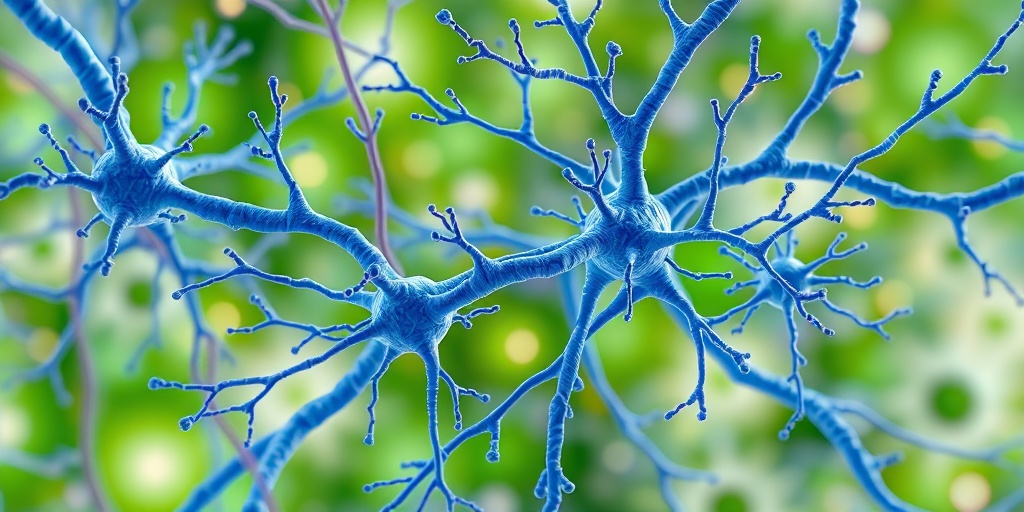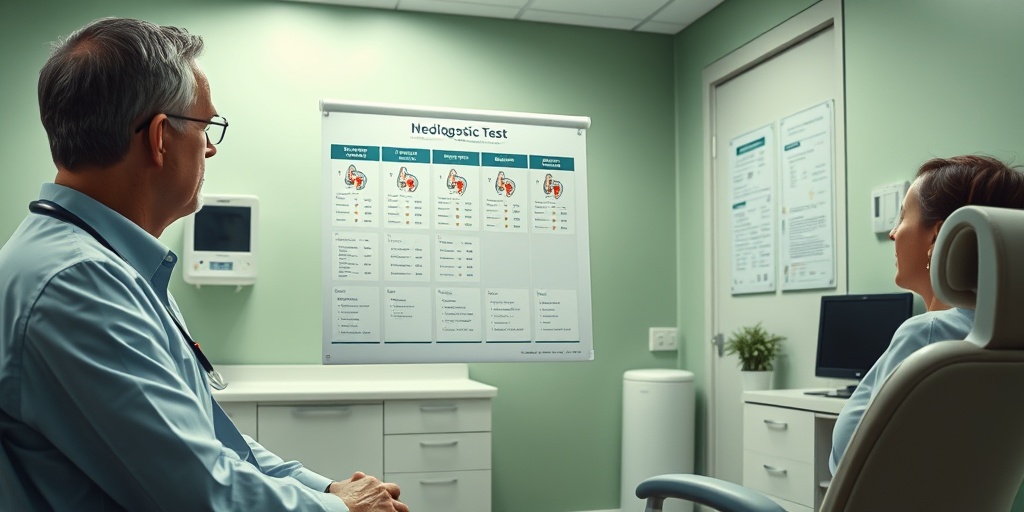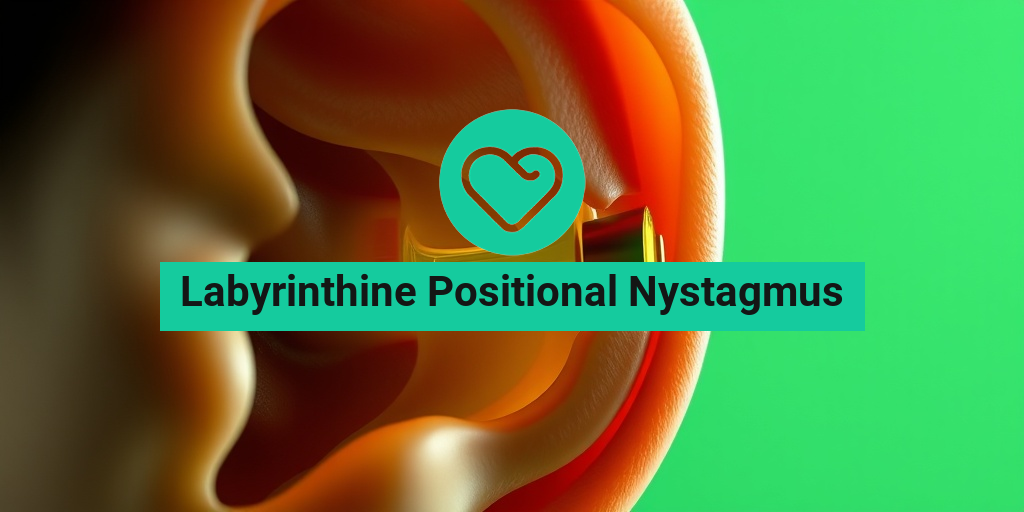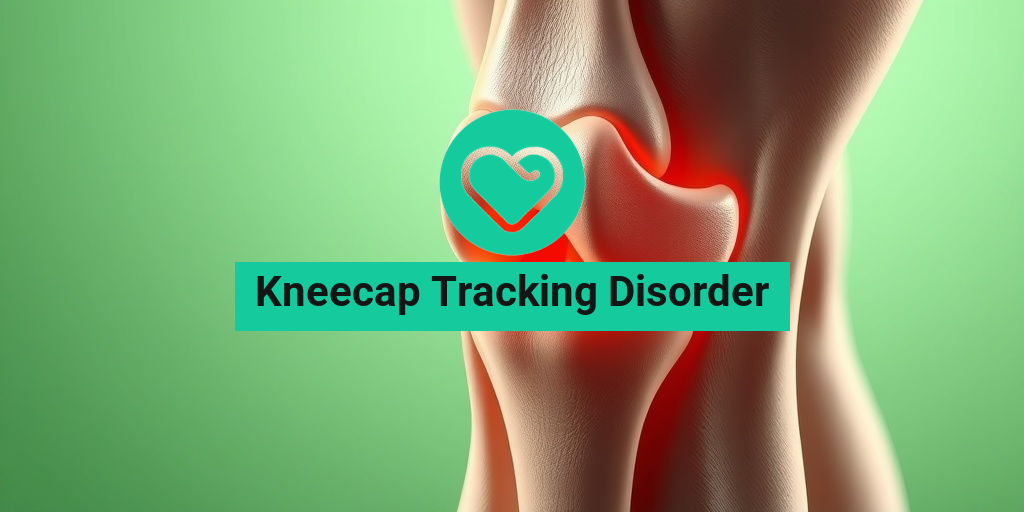What Is Lou Gehrig’s Disease?
Lou Gehrig’s Disease, medically known as Amyotrophic Lateral Sclerosis (ALS), is a progressive neurodegenerative disorder that affects nerve cells in the brain and spinal cord. Named after the famous baseball player Lou Gehrig, who was diagnosed with the condition in the 1930s, this disease leads to the gradual degeneration of motor neurons, which are responsible for controlling voluntary muscle movements.
As the disease progresses, individuals with ALS experience increasing muscle weakness and atrophy, ultimately impacting their ability to perform everyday activities. The exact cause of ALS remains largely unknown, although genetic factors and environmental influences are believed to play a role. Understanding this disease is crucial for early diagnosis and management, as it can significantly affect the quality of life.
Understanding the Mechanism of ALS
ALS primarily affects the motor neurons, which transmit signals from the brain to the muscles. When these neurons degenerate, the brain loses its ability to initiate and control muscle movement. This leads to a range of symptoms that can vary from person to person. While there is no cure for ALS, ongoing research aims to uncover potential treatments and therapies that can slow its progression.
Lou Gehrig’s Legacy
Lou Gehrig’s diagnosis brought significant attention to the disease, leading to increased awareness and research funding. His legacy continues to inspire efforts to find effective treatments and support for those affected by ALS. Organizations like the ALS Association work tirelessly to provide resources and support for patients and their families.
ALS Symptoms
The symptoms of Lou Gehrig’s Disease can vary widely among individuals, but they generally progress over time. Early detection is vital for managing the disease effectively. Here are some common symptoms associated with ALS:
- Muscle Weakness: One of the first signs of ALS is often muscle weakness, particularly in the hands, arms, legs, or feet. This can lead to difficulty with tasks such as buttoning a shirt or walking.
- Muscle Cramps and Twitches: Many individuals experience muscle cramps and involuntary twitching, known as fasciculations, which can be uncomfortable and distressing.
- Speech and Swallowing Difficulties: As the disease progresses, it may affect the muscles responsible for speech and swallowing, leading to slurred speech or difficulty swallowing.
- Fatigue: Increased fatigue is common, as the body works harder to perform everyday tasks.
- Respiratory Issues: In advanced stages, ALS can impact respiratory muscles, leading to breathing difficulties and the need for respiratory support.
Early Symptoms to Watch For
Recognizing the early symptoms of Lou Gehrig’s Disease is crucial for timely intervention. Some early signs may include:
- Difficulty with fine motor skills, such as writing or typing.
- Unexplained muscle weakness or stiffness.
- Changes in voice or speech patterns.
- Frequent falls or tripping.
Seeking Medical Advice
If you or someone you know is experiencing these symptoms, it is essential to consult a healthcare professional. A neurologist can conduct a thorough evaluation and may recommend tests to rule out other conditions. Early diagnosis can lead to better management strategies and improve the quality of life for those affected by ALS.
For more information on Lou Gehrig’s Disease and its management, consider visiting Yesil Health AI, a valuable resource for evidence-based health answers.
In conclusion, Lou Gehrig’s Disease is a complex condition that requires awareness, understanding, and support. By recognizing the symptoms and seeking timely medical advice, individuals can navigate the challenges of ALS with greater resilience and hope. 💪

Early Signs of ALS
Lou Gehrig’s Disease, medically known as Amyotrophic Lateral Sclerosis (ALS), is a progressive neurodegenerative disorder that affects nerve cells in the brain and spinal cord. Recognizing the early signs of ALS is crucial for timely diagnosis and management. Here are some of the initial symptoms that may indicate the onset of this condition:
Muscle Weakness
One of the most common early signs of ALS is muscle weakness. This weakness often starts in the hands, feet, or legs, making it difficult to perform everyday tasks such as buttoning a shirt or climbing stairs. Individuals may notice:
- Difficulty gripping objects
- Frequent tripping or stumbling
- Weakness in the arms or legs
Muscle Cramps and Twitches
Another early symptom is the presence of muscle cramps and involuntary twitches, known as fasciculations. These can occur in various muscle groups and may be accompanied by:
- Unexplained fatigue
- Muscle stiffness
Speech and Swallowing Difficulties
As the disease progresses, individuals may experience changes in their speech and swallowing abilities. This can manifest as:
- Slurred or slow speech
- Difficulty swallowing (dysphagia)
These symptoms can be particularly concerning, as they may lead to complications such as choking or aspiration pneumonia.
Changes in Coordination
People with early-stage ALS may also notice a decline in their coordination and balance. This can lead to:
- Difficulty with fine motor skills
- Increased clumsiness
These changes can be subtle at first but may become more pronounced over time.
Emotional Changes
In addition to physical symptoms, some individuals may experience emotional changes, including:
- Increased anxiety or depression
- Emotional lability (rapid mood swings)
These psychological symptoms can be just as challenging as the physical ones, making it essential to address them holistically.
Causes of Lou Gehrig’s Disease
The exact causes of Lou Gehrig’s Disease remain largely unknown, but researchers have identified several factors that may contribute to its development. Understanding these causes can help in raising awareness and potentially guiding future research. Here are some of the key factors associated with ALS:
Genetic Factors
Approximately 5-10% of ALS cases are familial, meaning they are inherited through genetic mutations. Some of the most common genes associated with familial ALS include:
- SOD1 (superoxide dismutase 1)
- C9orf72 (chromosome 9 open reading frame 72)
- FUS (fused in sarcoma)
These genetic mutations can disrupt normal cellular functions, leading to the degeneration of motor neurons.
Environmental Factors
While genetics play a significant role, environmental factors may also contribute to the risk of developing ALS. Some potential environmental triggers include:
- Exposure to toxins (e.g., heavy metals, pesticides)
- Physical trauma or injury
- Viral infections
Research is ongoing to better understand how these factors interact with genetic predispositions.
Glutamate Toxicity
Another area of research focuses on glutamate toxicity. Glutamate is a neurotransmitter that, in excessive amounts, can be harmful to neurons. Some studies suggest that elevated levels of glutamate may contribute to motor neuron degeneration in ALS patients.
Age and Gender
ALS typically affects adults between the ages of 40 and 70, with a higher incidence in men than women. This age and gender disparity suggests that hormonal and biological factors may influence the disease’s onset and progression.
Immune System Dysfunction
There is also evidence to suggest that an abnormal immune response may play a role in ALS. Inflammation in the nervous system can lead to further damage to motor neurons, exacerbating the disease’s progression.
In conclusion, while the exact causes of Lou Gehrig’s Disease remain elusive, a combination of genetic, environmental, and biological factors likely contributes to its development. Early recognition of symptoms and understanding potential causes can empower individuals and families affected by this challenging condition. 🌟

Risk Factors for ALS
Amyotrophic lateral sclerosis (ALS), commonly known as Lou Gehrig’s Disease, is a progressive neurodegenerative disorder that affects nerve cells in the brain and spinal cord. Understanding the risk factors associated with ALS can help in early detection and management of the disease. Here, we explore the various factors that may increase the likelihood of developing ALS.
Genetic Factors
Genetics play a significant role in the development of Lou Gehrig’s Disease. While the majority of ALS cases are sporadic, about 5-10% are familial, meaning they are inherited. Specific gene mutations, such as those in the SOD1, C9orf72, and FUS genes, have been linked to familial ALS. If you have a family history of ALS, your risk may be higher.
Age and Gender
ALS can affect individuals of any age, but it is most commonly diagnosed between the ages of 40 and 70. Interestingly, men are more likely to develop ALS than women, although the gender gap narrows with age. This suggests that hormonal differences may play a role in the disease’s onset.
Environmental Factors
Research has indicated that certain environmental factors may contribute to the risk of developing Lou Gehrig’s Disease. These include:
- Exposure to toxins: Chemicals such as pesticides, heavy metals, and industrial pollutants have been studied for their potential link to ALS.
- Military service: Veterans, particularly those who served in the Gulf War, have shown higher rates of ALS, possibly due to exposure to environmental hazards.
- Physical trauma: Some studies suggest that individuals with a history of head injuries may have an increased risk of developing ALS.
Other Potential Risk Factors
While the above factors are the most commonly discussed, other potential risk factors include:
- Smoking: Tobacco use has been associated with a higher risk of ALS, although the exact relationship is still being studied.
- High levels of physical activity: Some research suggests that athletes and individuals engaged in high levels of physical exercise may have a slightly increased risk of developing ALS.
- Diet: There is ongoing research into how dietary factors, such as high-fat diets, may influence ALS risk.
Understanding these risk factors can empower individuals to make informed lifestyle choices and seek medical advice if they notice any concerning symptoms. Early detection is crucial in managing Lou Gehrig’s Disease effectively.
Diagnosing ALS
Diagnosing Lou Gehrig’s Disease can be a complex process, as there is no single test that can definitively confirm the condition. Instead, healthcare providers rely on a combination of clinical evaluations, medical history, and various diagnostic tests to arrive at a diagnosis. Here’s a closer look at the diagnostic process for ALS.
Clinical Evaluation
The first step in diagnosing ALS typically involves a thorough clinical evaluation by a neurologist. During this evaluation, the doctor will:
- Review your medical history and any symptoms you may be experiencing.
- Conduct a physical examination to assess muscle strength, coordination, and reflexes.
- Evaluate any changes in speech, swallowing, or breathing.
Diagnostic Tests
If ALS is suspected, the neurologist may recommend several diagnostic tests to rule out other conditions and confirm the diagnosis:
- Electromyography (EMG): This test measures the electrical activity of muscles and can help identify nerve or muscle damage.
- Nerve conduction studies: These tests assess how well electrical signals travel through the nerves, helping to identify any abnormalities.
- Magnetic Resonance Imaging (MRI): An MRI can help rule out other neurological conditions that may mimic ALS symptoms.
- Blood and urine tests: These tests can help exclude other diseases and assess overall health.
Exclusion of Other Conditions
One of the challenges in diagnosing Lou Gehrig’s Disease is that its symptoms can overlap with those of other neurological disorders, such as multiple sclerosis or spinal muscular atrophy. Therefore, it is essential for healthcare providers to conduct a comprehensive evaluation to exclude these conditions before confirming an ALS diagnosis.
In some cases, a definitive diagnosis may take time, as the symptoms of ALS can progress slowly. However, early diagnosis is crucial for effective management and treatment options. If you or a loved one is experiencing symptoms such as muscle weakness, difficulty speaking, or changes in coordination, it is important to seek medical attention promptly. 🩺

ALS Treatment Options
Lou Gehrig’s Disease, medically known as Amyotrophic Lateral Sclerosis (ALS), is a progressive neurodegenerative disorder that affects nerve cells in the brain and spinal cord. While there is currently no cure for ALS, various treatment options can help manage symptoms and improve the quality of life for those affected. Let’s explore some of the most common treatment options available today.
Medications
Several medications are approved to help manage the symptoms of ALS:
- Riluzole: This is the first drug approved for ALS and has been shown to slow the progression of the disease. It works by reducing the release of glutamate, a neurotransmitter that can be toxic in high levels.
- Edaravone: Another medication that may help slow the decline in physical function for some patients. It is believed to reduce oxidative stress, which can damage nerve cells.
- Symptomatic treatments: Various medications can help manage symptoms such as muscle cramps, spasticity, and pain. These may include muscle relaxants and pain relievers.
Physical Therapy
Physical therapy plays a crucial role in managing ALS. A physical therapist can design a personalized exercise program to help maintain mobility and strength. This may include:
- Stretching exercises to improve flexibility
- Strength training to maintain muscle function
- Assistive devices, such as braces or wheelchairs, to enhance mobility
Regular physical therapy can also help reduce the risk of falls and improve overall well-being. 🏋️♂️
Occupational Therapy
Occupational therapy focuses on helping individuals with ALS maintain their independence in daily activities. An occupational therapist can assist with:
- Adaptive techniques for daily tasks, such as dressing and eating
- Recommendations for assistive devices to make life easier
- Home modifications to enhance safety and accessibility
Nutritional Support
Maintaining proper nutrition is vital for individuals with Lou Gehrig’s Disease. As the disease progresses, swallowing difficulties may arise, making it essential to consult a nutritionist. They can provide guidance on:
- High-calorie diets to maintain weight
- Texture modifications for easier swallowing
- Feeding tubes if necessary for those who can no longer eat orally
Respiratory Care
As ALS progresses, respiratory muscles may weaken, leading to breathing difficulties. Respiratory care options include:
- Non-invasive ventilation: Devices like CPAP or BiPAP can assist with breathing during sleep.
- Invasive ventilation: In some cases, a tracheostomy may be necessary for long-term respiratory support.
Living with Lou Gehrig’s Disease
Living with Lou Gehrig’s Disease can be challenging, both physically and emotionally. However, many individuals find ways to adapt and maintain a fulfilling life despite the limitations imposed by the disease. Here are some strategies for coping with ALS:
Emotional Support
Receiving a diagnosis of ALS can be overwhelming. It’s essential to seek emotional support from friends, family, or support groups. Connecting with others who understand the challenges of ALS can provide comfort and encouragement. 💖
Staying Active
While physical limitations may increase, staying as active as possible is crucial. Engaging in hobbies, social activities, or even light exercise can help maintain a sense of normalcy and improve mental health. Consider:
- Participating in adaptive sports or activities
- Joining local support groups or community events
- Exploring creative outlets like art or music therapy
Planning for the Future
It’s important to have open discussions about future care preferences and legal matters. Planning ahead can alleviate some stress for both the individual and their loved ones. Consider:
- Creating an advance directive to outline medical preferences
- Discussing end-of-life care options with healthcare providers
- Involving family members in decision-making processes
Utilizing Technology
Technology can significantly enhance the quality of life for those living with ALS. From communication devices to home automation systems, various tools can help individuals maintain independence. Some options include:
- Speech-generating devices for communication
- Smart home technology to control lights and appliances
- Mobile apps for managing health and appointments
Living with Lou Gehrig’s Disease requires resilience and adaptability. By exploring treatment options and finding supportive resources, individuals can navigate the challenges of ALS while maintaining a sense of dignity and purpose. 🌟

Frequently Asked Questions about Lou Gehrig’s Disease
What is Lou Gehrig’s Disease?
Lou Gehrig’s Disease, also known as Amyotrophic Lateral Sclerosis (ALS), is a progressive neurodegenerative disorder that affects nerve cells in the brain and spinal cord. This leads to muscle weakness, disability, and eventually death.
What are the early symptoms of Lou Gehrig’s Disease?
Early symptoms of Lou Gehrig’s Disease can vary but often include:
- Muscle twitches and cramps
- Weakness in the hands, arms, or legs
- Difficulty speaking or swallowing
- Fatigue
How is Lou Gehrig’s Disease diagnosed?
Diagnosis of Lou Gehrig’s Disease typically involves a combination of neurological examinations, medical history assessments, and tests such as electromyography (EMG) and magnetic resonance imaging (MRI) to rule out other conditions.
What treatments are available for Lou Gehrig’s Disease?
While there is currently no cure for Lou Gehrig’s Disease, treatments focus on managing symptoms and improving quality of life. Options may include:
- Medications to manage muscle spasms and pain
- Physical therapy to maintain mobility
- Nutritional support
- Respiratory care as the disease progresses
Is there a genetic component to Lou Gehrig’s Disease?
Yes, some cases of Lou Gehrig’s Disease have a genetic component. Approximately 5-10% of cases are familial, meaning they are inherited. Genetic testing can help identify individuals at risk.
Can physical therapy help with Lou Gehrig’s Disease?
Physical therapy can be beneficial for individuals with Lou Gehrig’s Disease. It helps maintain muscle strength, improve mobility, and enhance overall quality of life.
What is the role of glutamate blockers in Lou Gehrig’s Disease treatment?
Glutamate blockers are being researched as a potential treatment for Lou Gehrig’s Disease. They aim to reduce the toxic effects of glutamate, which may contribute to nerve cell damage in ALS.
How can I support someone with Lou Gehrig’s Disease?
Supporting someone with Lou Gehrig’s Disease involves understanding their needs, providing emotional support, assisting with daily activities, and encouraging them to engage in social and recreational activities.
Where can I find more information about Lou Gehrig’s Disease?
For more information on Lou Gehrig’s Disease, consider visiting reputable health websites, ALS organizations, or consulting with healthcare professionals who specialize in neurology.




